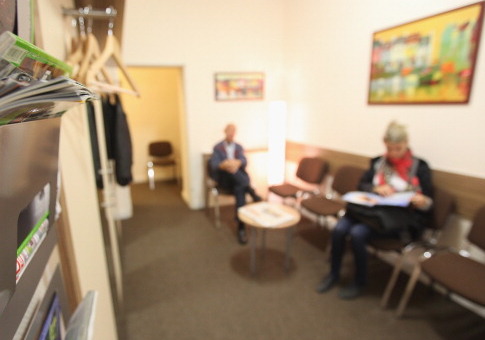After four years of Affordable Care Act implementation, the percentage of adults with no health care insurance has hit 12.2 percent in the last quarter of 2017, according to data from Gallup.
In October of 2013, the Obamacare exchanges opened and by January of 2014 the individual mandate, which requires that Americans purchase health insurance, was implemented.
In the last quarter of 2016, the percentage of uninsured hit a record low of 10.9 percent. A year later, in the last quarter of 2017, the percentage of uninsured increased by 1.3 points—the largest single-year increase Gallup has seen since it began tracking the measure in 2008. This percentage-point increase is estimated to total 3.2 million Americans.
"Several factors likely contributed to the increase in the uninsured rate in 2017," Gallup explains. "Some insurance companies stopped offering insurance through the exchanges, and the resulting lack of competition drove up the cost of plans for consumers. This may have caused some Americans, especially those who failed to qualify for federal subsidies, to forgo insurance."
Gallup says another reason that some individuals chose not to purchase insurance could be because there were reports that the individual mandate might not be enforced since there were many attempts to repeal and replace Obamacare in 2017.
The data show that the uninsured rate for young individuals ages 18 to 25 rose the most from the last quarter of 2016 to 2017, by two percentage points. In the last quarter of 2017, for those ages 18 to 25, the uninsured rate is 16.7 percent. For those ages 26 to 34, the uninsured rate is 20.1 percent.
"Young adults serve a critical function in health care markets because their low usage of health care helps offset the higher costs of insuring older Americans," the report said.
The uninsured rate was also higher among Hispanics and lower-income earners. The uninsured rate for Hispanics was 29.6 percent, for white Americans it was 7.6 percent, and for black Americans it was 14.8 percent. For those earning less than $36,000, the uninsured rate was 22.8 percent. For those earning $36,000 to $90,000, the uninsured rate was 10.6 percent. And for those earning more than $90,000, the uninsured rate was 3.5 percent.
Gallup also finds that Americans purchasing their own plans through the Obamacare exchanges saw the biggest change in 2017. In the last quarter of 2016, 21.3 percent said they had bought a plan on their own. This number decreased to 20.3 percent in the last quarter of 2017.
"The decline in the percentage of Americans who pay for their own coverage marks a reversal of the trend seen since the ACA's individual mandate took effect in the third quarter of 2013," the report states. "Between then and 2016, the percentage of adults with coverage via self-paid plans has grown 3.7 points."
According to Joe Antos, a health care expert at the American Enterprise Institute, lower enrollment in 2017 was driven by an increase in premiums, which were approved before the 2016 election.
"2017 premiums averaged 22 percent higher than 2016 premiums, which were underpriced partly because insurers did not have sufficient information on their exchange customers, had come in low in the first few years to gain market share, and were under political pressure to keep premiums below a sustainable level," Antos said. "The drop in enrollment in 2017 came about before Republicans were in power and able to make program changes."
